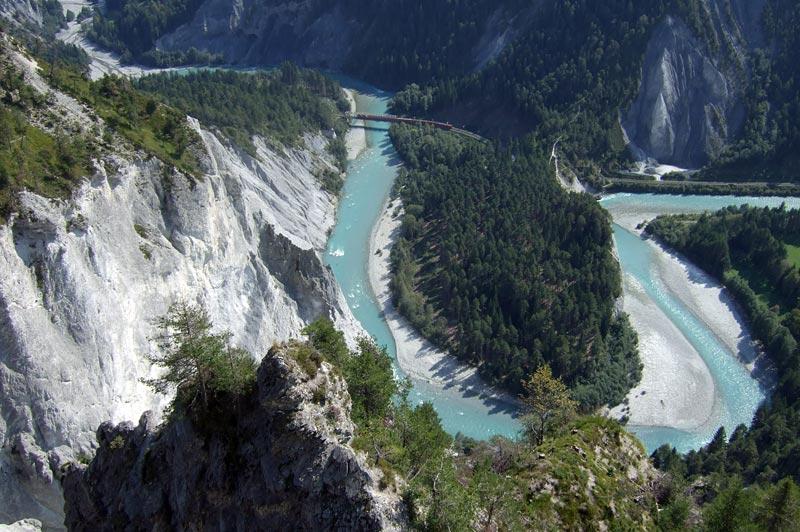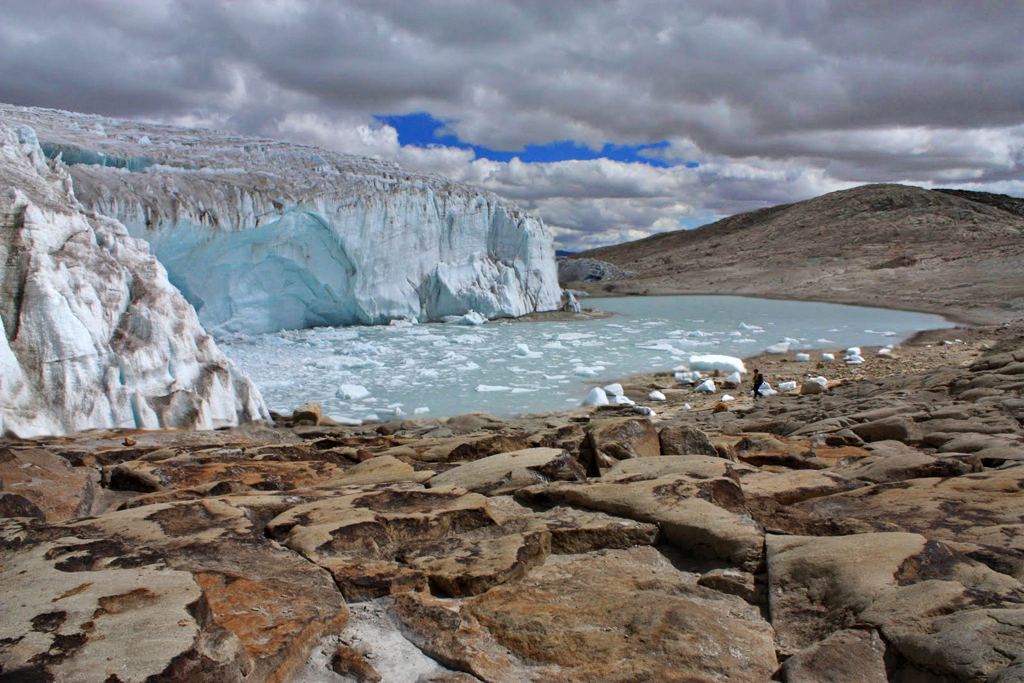|
Griesgletscher
The Gries Glacier () is a 5 km long glacier (2005) situated in the Lepontine Alps in the canton of Valais in Switzerland. In 1973 it had an area of 6.23 km2. In 2008 it had an area of 5.26 km2. History Griesgletscher as well as the many surrounding Swiss Alpine glaciers have played an important role in the cultural and economic development of the Swiss Alps. During the Second World War owing to its proximity to the Swiss/Italian frontier the Swiss Army constructed a series of look-out posts and foxholes to reinforce this relatively undefined border area and as part of Switzerland hydro-electric building programme. A dam was built in front of the glacier, however the resulting dam contributed to the increased retreat of the glacier thanks to the glacier becoming decoupled from the bedrock as water levels in the dam increased. Scientific research Over the years there has been a great deal of scientific research undertaken on Griesgletscher thanks to its accessibilit ... [...More Info...] [...Related Items...] OR: [Wikipedia] [Google] [Baidu] |
Blinnenhorn
The Blinnenhorn (German) or Corno Cieco (Italian) is a mountain in the Lepontine Alps, located on the border between Italy and Switzerland. On the north-east side lies the Gries Glacier. See also *List of mountains of Valais *List of most isolated mountains of Switzerland This is a list of the most topographically isolated mountains of Switzerland. This list only includes summits with an isolation of at least , regardless of their elevation or topographical prominence (drop). For a general list of mountains, with ... References External linksBlinnenhorn on Hikr Mountains of the Alps Alpine three-thousanders Mountains of Switzerland Mountains of Valais Lepontine Alps Italy–Switzerland border {{VerbanoCusioOssola-mountain-stub ... [...More Info...] [...Related Items...] OR: [Wikipedia] [Google] [Baidu] |
Valais
Valais ( , ; ), more formally, the Canton of Valais or Wallis, is one of the cantons of Switzerland, 26 cantons forming the Switzerland, Swiss Confederation. It is composed of thirteen districts and its capital and largest city is Sion, Switzerland, Sion. Valais is situated in the southwestern part of the country. It borders the cantons of Canton of Vaud, Vaud and Canton of Bern, Bern to the north, the cantons of Canton of Uri, Uri and Ticino to the east, as well as Italy to the south and France to the west. It is one of the three large southern Alps, Alpine cantons, along with Ticino and Grisons. It is a bilingual canton, French and German being its two official languages. Traditionally, the canton is divided into Lower, Central, and Upper Valais, the latter region constituting the German-speaking minority. Valais is essentially coextensive with the valley of the Rhône from its headwaters to Lake Geneva, separating the Pennine Alps from the Bernese Alps, the two largest mount ... [...More Info...] [...Related Items...] OR: [Wikipedia] [Google] [Baidu] |
Switzerland
Switzerland, officially the Swiss Confederation, is a landlocked country located in west-central Europe. It is bordered by Italy to the south, France to the west, Germany to the north, and Austria and Liechtenstein to the east. Switzerland is geographically divided among the Swiss Plateau, the Swiss Alps, Alps and the Jura Mountains, Jura; the Alps occupy the greater part of the territory, whereas most of the country's Demographics of Switzerland, 9 million people are concentrated on the plateau, which hosts List of cities in Switzerland, its largest cities and economic centres, including Zurich, Geneva, and Lausanne. Switzerland is a federal republic composed of Cantons of Switzerland, 26 cantons, with federal authorities based in Bern. It has four main linguistic and cultural regions: German, French, Italian and Romansh language, Romansh. Although most Swiss are German-speaking, national identity is fairly cohesive, being rooted in a common historical background, shared ... [...More Info...] [...Related Items...] OR: [Wikipedia] [Google] [Baidu] |
Glacier
A glacier (; or ) is a persistent body of dense ice, a form of rock, that is constantly moving downhill under its own weight. A glacier forms where the accumulation of snow exceeds its ablation over many years, often centuries. It acquires distinguishing features, such as crevasses and seracs, as it slowly flows and deforms under stresses induced by its weight. As it moves, it abrades rock and debris from its substrate to create landforms such as cirques, moraines, or fjords. Although a glacier may flow into a body of water, it forms only on land“Glacier, N., Pronunciation.” Oxford English Dictionary, Oxford UP, June 2024, https://doi.org/10.1093/OED/7553486115. Accessed 25 Jan. 2025. and is distinct from the much thinner sea ice and lake ice that form on the surface of bodies of water. On Earth, 99% of glacial ice is contained within vast ice sheets (also known as "continental glaciers") in the polar regions, but glaciers may be found in mountain ranges on ever ... [...More Info...] [...Related Items...] OR: [Wikipedia] [Google] [Baidu] |
Lepontine Alps
The Lepontine Alps (, , ) are a mountain range in the north-western part of the Alps. They are located in Switzerland (Valais, Ticino, Canton of Uri, Uri and Graubünden) and Italy (Piedmont and Lombardy). The Simplon Tunnel, Simplon rail tunnel (from Brig, Switzerland, Brig to Domodossola), the Gotthard Base Tunnel, Gotthard rail (from Erstfeld to Bodio) and Gotthard Road Tunnel, Gotthard road tunnels (from Andermatt to Airolo) and the San Bernardino (road tunnel), San Bernardino road tunnel are important transport arteries. The eastern portion of the Lepontine Alps, from the St Gotthard Pass to the Splügen Pass, is named the Adula Alps, while the western part is historically referred to as the Ticino Alps. Etymology The designation ''Lepontine Alps'', derived from the Latin name of the Valle Leventina, has long been somewhat vaguely applied to the Alpine ranges that enclose it, before being used for the whole range. Geography Following the line marking the division of the ... [...More Info...] [...Related Items...] OR: [Wikipedia] [Google] [Baidu] |
List Of Glaciers In Switzerland
This is a non-exhaustive list of the major glaciers in Switzerland. It contains their surface area, their lengths since the start of measurement and the most current year, their height and their outflow. Most of them are retreating and many will vanish. All of these glaciers are located within the Swiss Alps. Most of them are situated in the Pennine and Bernese Alps. The Jungfrau-Aletsch protected area includes the largest glaciers of the Alps. There are glaciers in the four major drainage basins of Switzerland. The Rhine and Rhône basins are located on the northern side of the Alps while the Po basin is located on the south side of the Alps. The Danube basin is located on the east side of the Alps. There are no glaciers in the Swiss portion of the Adige basin. There are approximately 1,800 glaciers in the Swiss Alps. List See also * List of mountains in Switzerland * Retreat of glaciers since 1850#Europe References External links List of dangerous glaciers in Switze ... [...More Info...] [...Related Items...] OR: [Wikipedia] [Google] [Baidu] |
Swiss Alps
The Alps, Alpine region of Switzerland, conventionally referred to as the Swiss Alps, represents a major natural feature of the country and is, along with the Swiss Plateau and the Swiss portion of the Jura Mountains, one of its three main Physical geography, physiographic regions. The Swiss Alps extend over both the Western Alps and the Eastern Alps, encompassing an area sometimes called Central Alps. While the northern ranges from the Bernese Alps to the Appenzell Alps are entirely in Switzerland, the southern ranges from the Mont Blanc massif to the Bernina Range, Bernina massif are shared with other countries such as France, Italy, Austria and Liechtenstein. The Swiss Alps comprise almost all the highest mountains of the Alps, such as Dufourspitze (4,634 m), the Dom (mountain), Dom (4,545 m), the Liskamm (4,527 m), the Weisshorn (4,506 m) and the Matterhorn (4,478 m). The other following major summits can be found in this list of mountains of Switzerland. Since the Middle Age ... [...More Info...] [...Related Items...] OR: [Wikipedia] [Google] [Baidu] |
Glaciers Of Valais
A glacier (; or ) is a persistent body of dense ice, a form of rock, that is constantly moving downhill under its own weight. A glacier forms where the accumulation of snow exceeds its ablation over many years, often centuries. It acquires distinguishing features, such as crevasses and seracs, as it slowly flows and deforms under stresses induced by its weight. As it moves, it abrades rock and debris from its substrate to create landforms such as cirques, moraines, or fjords. Although a glacier may flow into a body of water, it forms only on land“Glacier, N., Pronunciation.” Oxford English Dictionary, Oxford UP, June 2024, https://doi.org/10.1093/OED/7553486115. Accessed 25 Jan. 2025. and is distinct from the much thinner sea ice and lake ice that form on the surface of bodies of water. On Earth, 99% of glacial ice is contained within vast ice sheets (also known as "continental glaciers") in the polar regions, but glaciers may be found in mountain ranges on every contine ... [...More Info...] [...Related Items...] OR: [Wikipedia] [Google] [Baidu] |



